第36章
The forests abound with gigantic trees with cylindrical, buttressed, or furrowed stems, while occasionally the traveller comes upon a wonderful fig-tree, whose trunk is itself a forest of stems and aerial roots. Still more rarely are found trees which appear to have begun growing in mid-air, and from the same point send out wide-spreading branches above and a complicated pyramid of roots descending for seventy or eighty feet to the ground below, and so spreading on every side, that one can stand in the very centre with the trunk of the tree immediately overhead. Trees of this character are found all over the Archipelago, and the accompanying illustration (taken from one which I often visited in the Aru Islands) will convey some idea of their general character. I believe that they originate as parasites, from seeds carried by birds and dropped in the fork of some lofty tree. Hence descend aerial roots, clasping and ultimately destroying the supporting tree, which is in time entirely replaced by the humble plant which was at first dependent upon it. Thus we have an actual struggle for life in the vegetable kingdom, not less fatal to the vanquished than the struggles among animals which we can so much more easily observe and understand. The advantage of quicker access to light and warmth and air, which is gained in one way by climbing plants, is here obtained by a forest tree, which has the means of starting in life at an elevation which others can only attain after many years of growth, and then only when the fall of some other tree has made room for then. Thus it is that in the warm and moist and equable climate of the tropics, each available station is seized upon and becomes the means of developing new forms of life especially adapted to occupy it.
On reaching Sarawak early in December, I found there would not be an opportunity of returning to Singapore until the latter end of January. I therefore accepted Sir James Brooke's invitation to spend a week with him and Mr. St. John at his cottage on Peninjauh.
This is a very steep pyramidal mountain of crystalline basaltic rock, about a thousand feet high, and covered with luxuriant forest. There are three Dyak villages upon it, and on a little platform near the summit is the rude wooden lodge where the English Rajah was accustomed to go for relaxation and cool fresh air. It is only twenty miles up the river, but the road up the mountain is a succession of ladders on the face of precipices, bamboo bridges over gullies and chasms, and slippery paths over rocks and tree-trunks and huge boulders as big as houses. A cool spring under an overhanging rock just below the cottage furnished us with refreshing baths and delicious drinking water, and the Dyaks brought us daily heaped-up baskets of Mangosteens and Lansats, two of the most delicious of the subacid tropical fruits. We returned to Sarawak for Christmas (the second I had spent with Sir James Brooke), when all the Europeans both in the town and from the out-stations enjoyed the hospitality of the Rajah, who possessed in a pre-eminent degree the art of making every one around him comfortable and happy.
A few days afterwards I returned to the mountain with Charles and a Malay boy named Ali and stayed there three weeks for the purpose of making a collection of land-shells, butterflies and moths, ferns and orchids. On the hill itself ferns were tolerably plentiful, and I made a collection of about forty species. But what occupied me most was the great abundance of moths which on certain occasions I was able to capture. As during the whole of my eight years' wanderings in the East I never found another spot where these insects were at all plentiful, it will be interesting to state the exact conditions under which I here obtained them.